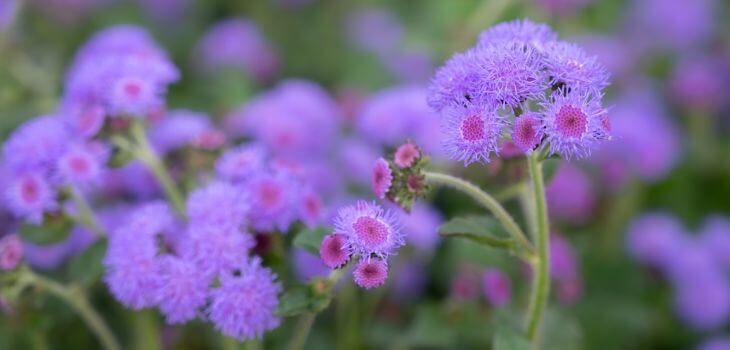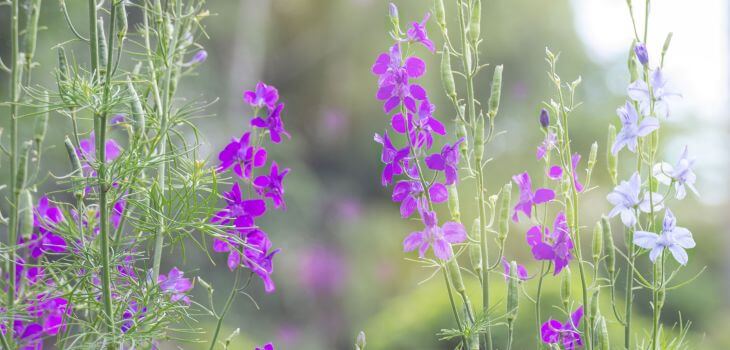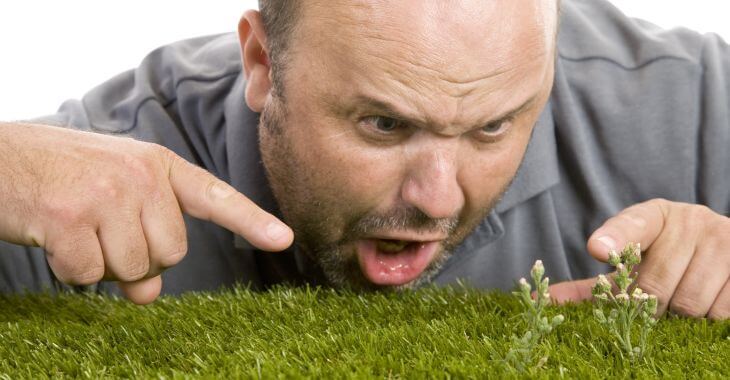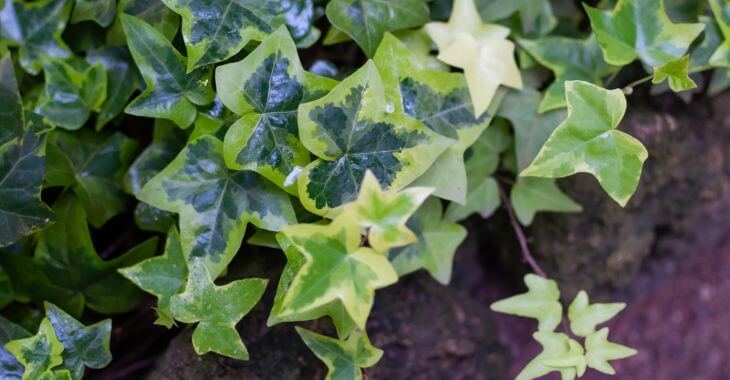What Is This Weed with Purple Flowers?

Do you have a weed with purple flowers growing in your yard? Identifying your weeds is key to determining the best way to remove them. There are several different types of weeds with purple flowers that can take over your lawn or landscaping areas.
Low-Growing Weed with Small Purple Flowers
If you have a weed with small purple flowers, it could be a few different types of plants. There are weeds that grow close to the ground that have little purple flowers that while pretty, may not be desirable for your landscaping. Here are a few different weeds with small purple flowers.
- Wild Violets
- If you have wild violets, it will often look similar to clover with rounded leaves. This is a weed with small purple flowers that also contain white and yellow in the middle of the petals. As far as weeds are concerned, this is one of the more attractive options, but it can be invasive.
- Creeping Charlie
- When identifying your purple flower weed, look at how it grows to determine the type. Creeping Charlie is a type of ground ivy that is related to the mint family of plants. It grows low to the ground with very small purple flowers that bloom in the late spring or early summer.
- Selfheal
- If you have short green weeds with oval leaves, a hairy stem and small purple flowers at the head of the stem, you may have selfheal weeds. This plant is also called heal-all, and has medicinal properties for healing wounds, but still can pose a risk to your lawn and landscaping areas.
- Forget-Me-Nots
- Like wild violets, forget-me-nots are quite pleasant to look at and some gardeners are happy to have them in their landscape beds. This weed with purple flowers also has blue flowers, both with yellow centers. While they are pretty, forget-me-nots are a weed and may begin growing in areas they are not wanted.
- Henbit
- Another mint-related plant, Henbit is a low-growing weed that has small round leaves with scalloped edges and tiny purple flowers. Henbit prefers moist ground and will often take over areas near garden ponds and other water sources. It can quickly take over your yard if left unattended.
Once you identify your low-growing weed with small purple flowers, you can find the right option to manage it. There are many preemergent herbicides that can manage your weeds before they appear, or you may be able to pull them individually or use other treatments.
Tall Purple Flower Weed Types
If you have a tall purple flower weed, it is likely not any of the previous varieties. Many of the tall weeds with purple flowers are in the thistle, nightshade or nettle families. Knowing which you have growing in your yard can determine the best weed control method to remove these invasive plants.
- Creeping Thistle
- Also known as Canadian thistle, creeping thistle is a perennial weed that can invade your yard and gardens. The plant has thick, purplish stems and spear-shaped leaves topped with fluffy purple blooms. Once finished blooming, the fluffy flower turns white and goes to seed, spreading it around your property.
- Black Nightshade
- Nightshade is known for its deadly berries, but it is also an invasive tall purple flower weed. Black nightshade can grow as a bush or climbing vine with small purple flowers and purple/red berries. While not as poisonous as deadly nightshade, it is often not welcome in gardens where it competes for soil and sun.
- Common or Spear Thistle
- If you think of the thistle that was loved by a donkey in a popular cartoon, you will picture the common or spear thistle. This is tall weed with a thorny bulb topped with a purple flower and spiked leaves on its stem. Like creeping thistle, the flowers can spread hundreds of seeds around your yard if allowed to bloom.
- Purple Dead Nettle
- Often mistaken for henbit, purple dead nettle has small purple flowers but tends to grow much taller. The purple flowers are also lighter in color and the leaves of the weed tend to have a more triangular shape versus the rounder shape of the henbit weed. Both are mint relatives and love moist soil.
- Musk Thistle
- Among the tall purple flower weeds, thistles tend to be the most common. The musk thistle, also called a nodding thistle, have long stems and leaves that are barbed and topped with the fluffy purple flower. As the name suggests, the flower tends to bend or “nod” downward.

If you have a weed with purple flowers in your yard, there are ways to remove these plants. If you need help with weed control for any types of purple flower weed like thistles, nightshade or nettles, talk to your local landscaper for professional advice or service.

